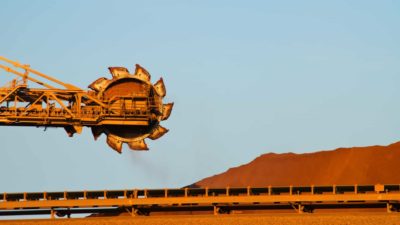Lower iron ore prices are coming, it's just a matter of when. But if you own BHP Group Ltd (ASX: BHP) shares, here's how the mining giant is planning on meeting this challenge.
The head of BHP's WA iron ore operations, Brandon Craig, warns that the strong prices for the commodity won't last, reported The Age.
BHP shareholders may not want to hear this news as the price of the steel making ingredient stays stubbornly high.
Tailwinds for BHP shares may be waning
In fact, analysts have been left scrambling to upgrade their iron ore price forecasts over the past several months as the mineral stayed around US$140 a tonne.
This is in part due to stimulus spending by several countries to kick start their economy as we emerge from COVID-19.
More significantly, the world's largest importer of iron ore, China, is said to be readying a new round of stimulus.
While the high prices may hold for a while yet, Craig said the good times won't last as the effect from the stimulus support fades.
Oversupplied in the long-term
This is because the iron ore market is in a structural surplus. The laws of economics dictate that commodity products always revert to competing on cost in the long-term.
It's a good thing that BHP and its peer Rio Tinto Limited (ASX: RIO) are among the lowest cost iron ore producers in the world.
But those who own BHP shares will be happy to hear that there's an opportunity to squeeze more profits. Craig outlined ways he can cut more operating expenses to protect profits.
BHP shares supported at the margins
For instance, laser scanners are being installed at BHP's eight ship loaders at Port Headland. This will automate the loading of vessels with little human intervention.
The project will cost $50 million over five years and is forecast to cut 30 minutes off the average ship loading time. That may not sound much, but it can help defer the need to build a new berth, which will ultimately cost a lot more.
Savings from automation can also be achieved through its 1,300 kilometres rail network and from using green energy.
BHP can't offset the surge in fuel prices from its petroleum division since it divested that to Woodside Energy Group Ltd (ASX: WDS).
BHP still cautious on green energy
The cost of solar and wind power is dropping at a time when fossil fuel prices are surging. This could help justify the economics of green energy projects, although Craig is still working out where best to deploy capital.
That is a more conservative approach than the one taken by Rio Tinto, according to The Age. Rio Tinto committed $2 billion to replace 80% of the gas used for power with sustainable energy. It's convinced that the project economics stacks up without applying a cost to emissions.
The BHP share price has fallen 5% over the past year while the Rio Tinto share price has dipped 7%.









